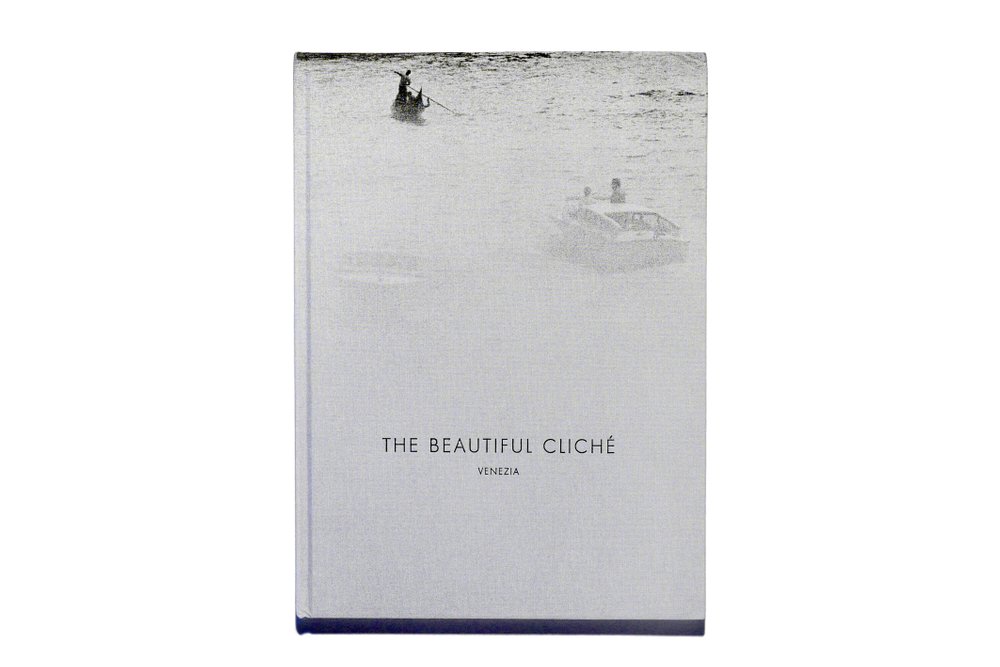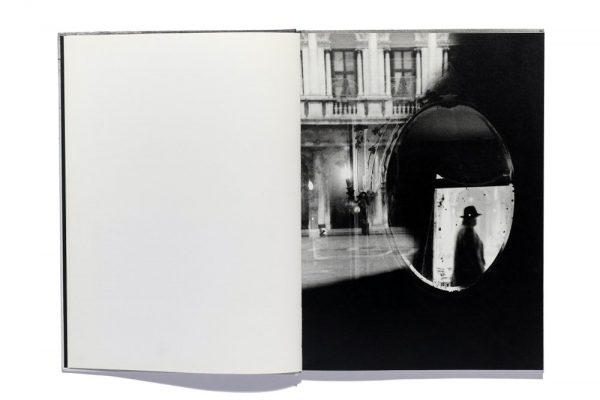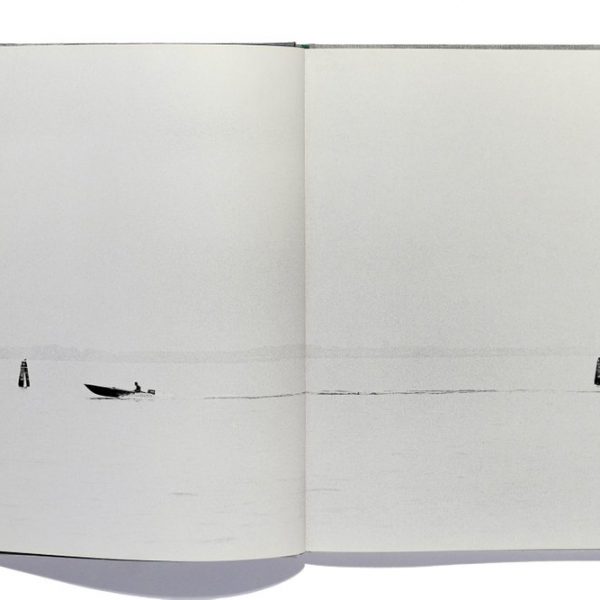Photographs by Renato D’Agostin
Text by Renata Codello, Italo Zannier, Chiara Casarin
Silvana Editoriale, 2011
Signed copy
Hardcover. Cloth.
112 pages
23.8x33cm
From the preface by Renata Codello
The acclaimed beauty of Venice is perhaps among the best known and most distinguishing features of the city.
“Postcard” shots of it are just as common: stereotypical pictures reproducing unique and incomparable landmarks that are promoted through the endless repetition of the same images. It would seem, therefore, that little or nothing remains to be discovered in the lagoon city, which is so strongly conditioned by its own legend.
Renato D’Agostin’s work explores possibilities of a different sort: it unveils the best known architectural sites of Venice, such as St Mark’s Square, by making them the object of a striking primary analysis, whereby the outlines of the architectural volumes fade away without losing their weight; space is made the object of endless interpretations, yet all reflecting the author’s vision; the details of the buildings necessarily point to the whole structures; the lagoon horizon is traced by the ideal profiles of the islands and by the dots of the mooring posts, without being conditioned by them.
This is not simply a book of photographs, then, but a collection of possible “visions” of the city. The images are not made complete or defined by their contours; rather, they force the viewer to think about the places they come from – that is, they point towards a way of perceiving the entire city which does not depend on how its details are photographically rendered.
In its not easy to abstract given places from such a complex city and turn them into “photographic places”, which is to say sites capable of eliciting emotions, wonder, and amazement. Perhaps one might say that the author has placed himself in a condition to “listen to places”, so as to distil some of their essential qualities.
What transpires is a drive towards the future that transcends the means of photography, aspiring to discover horizons and paths that are still concealed. This approach fully brings out the liveliness of places, their powerful capacity of being perceived by millions of visitors – regardless of the extent to which they are understood – in always different and constantly renewed ways.
From the text by Italo Zannier
Venice and photography: a combination whose metaphorical power finds no equal in the world or in the history of the most striking and universal visual symbol of contemporaneity – extending from Daguerre’s invention (1839) down to the “analogical” photography of today.
[…]
Who knows what else awaits the young and the people of the future (I wish I were one of them myself! That way I could I perfidiously smile at the ignorance Moholy-Nagy anathematized in 1925: “The illiterate of the future will be the person who is not familiar with photography – while today it is literature”).
[…]
Today D’Agostin is newly attempting, or rather newly suggesting, an interpretation of the city, in the wake of Naya, Filippi, Roiter, Berengo-Gardin, Campigotto and Zanta (among others). I almost forgot to mention Naya’s charming chromolithographic “mementos” – reminiscent of the perfumed best wishes cards in vogue among barbers up until the 1950s – which focused on the enticing image of Venice. In fact, almost all photographers have engaged with this image (I am waiting to see what the great Joseph Koudelka has come up with over the last twenty years, since he apparently always makes a surreptitious appearance in the city at Carnival!).
[…]
Finally a book on Venice without gondolette, silvery reflections, romantic glimpses of canals and bridges… Chinese masks… the setting sun towards Marghera… squeri photographed with cell phones… and everything else that provides the perfect tourist measure for selling a city known as “the most beautiful in the world.”
D’Agostin’s eye, eager for dazzling light, is certainly more sensitive than the emulsion or apparatus of his camera, and this is a crucial talent in the field of photography – for yesterday’s as much as for tomorrow’s.
From the text by Chiara Casarin
Venice embodies the source of Renato D’Agostin’s enthusiasm and at the same time the temporary point of arrival of a journey that has led him to New York, Paris and Tokyo in an ongoing visual pursuit marked by an almost analytic fervour and quasi-instinctive logic. Renato D’Agostin’s work attracts critical attention on account of the unbroken and intense research discernible behind his shots.
[…]
Looking at these photographs we get the same feeling as when we awake in the morning after having visited imaginary places in our dreams so evocative as to seem real – places that in our night fantasies tend to strip themselves of everything superficial, of details and the rigour of perspective, so as to manifest their essential geometry: their essence beyond all descriptive accretions.
[…]
Geometric and paradoxical abstract patterns stand out against white or black backgrounds: they are either plunged in the milky paleness of fog and materialized light or else surface from the depths of darkness, which – as through a cyclical return – embodies the very place in which the photograph is created: the darkroom as the fertile womb from which pictures finally spring.
[…]
Particulars become graphemes, the essential elements of an alphabet used to construct a narrative on the immortalized moment that directs the viewer’s mind towards a more intimate, hidden and almost forbidden corner of his own soul and that of others. It is thanks to the metaphorical parallel of this search that it is possible to describe D’Agostin’s works as genuine sculptures of light.
[…]
D’Agostin’s lens frame Venice from above, providing an unusual and original aerial view that is like a detailed drawing that refuses to lend primacy to one place over another, making all spaces equal, like the many pieces of a puzzle. D’Agostin takes wide shots and then by shattering them into a thousand pieces obtains the single images that make up his Venice.
[…]
There is something more to photography, something concealed within this art, which nonetheless emerges in its most didactic expressions. The language of photography, no matter how poetic, is always capable of providing information. It can therefore reveal its documentary worth as a rich source of information, which in the case of the architecture and landscape of Venice represents far more than a mere background and context. Over one century ago, Ongania turned his photographic eye towards the walls of St Mark’s to catch the passing of time on their surface.
Today Renato D’Agostin is immortalizing fractions of time in his Venice, imprinting a gaze sprung from the city itself upon its history. The elements D’Agostin is searching for and finding spring from Venice itself; nothing is added: things are simply allowed to find poetic expression.






